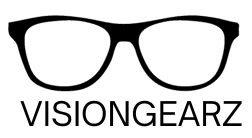Don't miss our holiday offer - up to 50% OFF!
Pros and Cons of Reading Glasses

Reading glasses have magnifying lenses that enlarge text or near objects so they are easier to see. They are used by people who have difficulty focusing on close-range objects.
However, there are many advantages and disadvantages to using them.
Pros of Wearing Reading Glasses
- Improved near vision
They make it easier to see things in close proximity. Reading books, newspapers, or text on your phone is easier with reading glasses.
- Reduced eye fatigue
When your eyes have difficulty focusing on objects, it leads to eye strain. This brings about headaches, tired eyes, or blurred vision. Reading glasses reduce all these issues.
- Better Posture
Without reading glasses, people often lean in close to see things better. This can lead to poor posture and neck or back pain. Wearing reading glasses allows you to maintain a comfortable distance from objects and devices you’re observing. This also reduces aches and pains related with poor posture
- Improved Performance
Clear vision can make a difference in your job or hobbies. Whether you’re reading reports, working on the computer, or engaging in a personal project, being able to see clearly can help you perform your activities better.
- Accessible and Affordable
Unlike prescription glasses, many reading glasses can be purchased over the counter or online with no prescription required. This makes it more economical and effortless for many people with mild vision problems.
Cons of Wearing Reading Glasses

While it has a number of advantages, reading glasses also have some disadvantages:
- Limited Range of Focus
Reading eyeglasses are designed for viewing nearby objects. They are not much help for viewing objects that are far away. When you view distant objects with reading glasses, they appear foggy. This means you may need to put them on and take them off often throughout the day. This can be inconvenient.
- It Causes Eye Strain if Used Incorrectly
Wearing reading glasses that are either too strong or too weak for your eyes can result in eye strain. This is why it is important to get regular eye tests and to find the right strength of reading glasses for you.
- Not suitable for other vision problems
You’ll need prescription glasses if you have problems like astigmatism or nearsightedness. Reading glasses help magnify objects, but they don’t do much else.
- Adaptation Period
As with nearly all glasses, it can take some time for your eyes and brain to get used to reading glasses when you first start wearing them. Until this is happening, you might experience some discomfort or difficulty judging distances.
What are the Alternatives?
Using reading glasses is the easiest, most convenient, and least invasive method for dealing with age-related farsightedness. Other methods include:
- Contact Lenses
Monovision or multifocal contact lenses are special lenses for treating presbyopia. They are good for those with active lifestyles. However, they often require an adjustment period, daily maintenance and they can be pricey.
- Eye Drops
There are special eye drops that temporarily improve presbyopia when applied. They work quickly but come with side effects like redness or headaches. They are not ideal for night use.
- Surgical Options
For those seeking a more permanent fix, there are several procedures available:
- Intraocular lens (IOL) transplants, which are often done during cataract surgery, can correct vision at various distances. However, it sometimes comes with complications like infections, inflammation, and vision loss.
- Corneal inlays are tiny implants in the cornea that can improve near vision in the eye. Side effects may include inflammation, scarring, and clouding of the cornea.
- LASIK is not a direct cure for presbyopia. However, variations of the procedure, like monovision LASIK, can reduce dependency on reading glasses. Symptoms may include dry eyes, light sensitivity, and in extreme cases, blindness.
- Squinting and Holding Things at Arm’s Length
It’s free, requires no equipment, and gives you a great arm workout. But you’ll probably end up with a headache and some very interesting facial expressions.
At the end of the day, reading glasses remain the popular choice for their simplicity and low risk.
Read Also: Types of Reading Glasses
